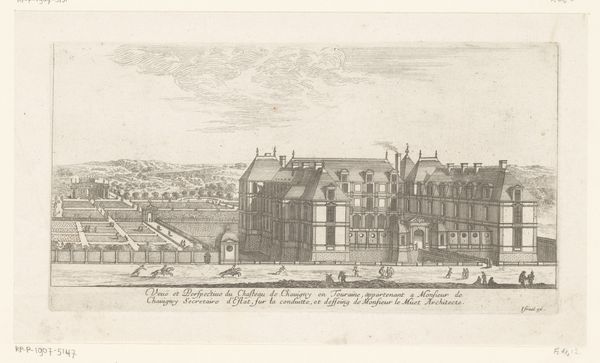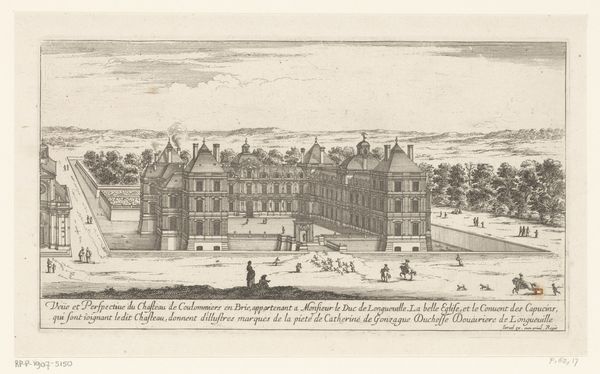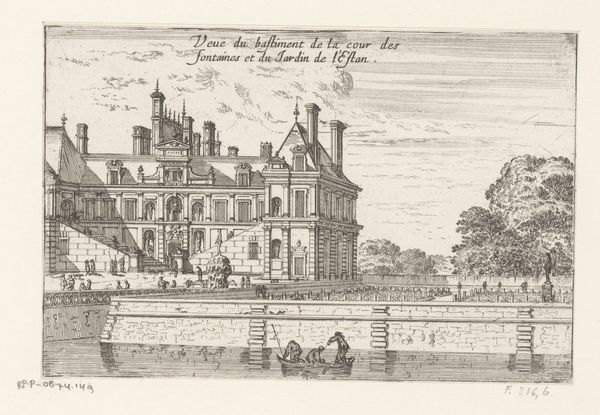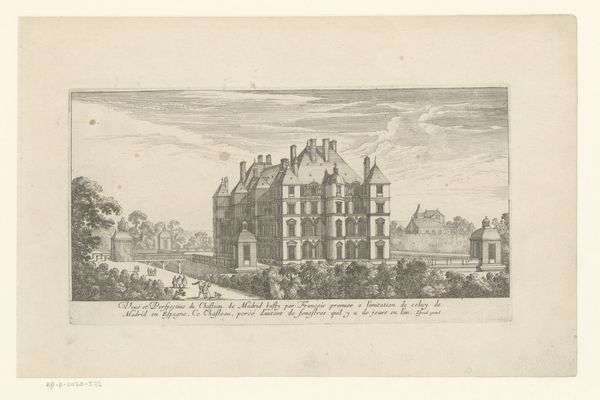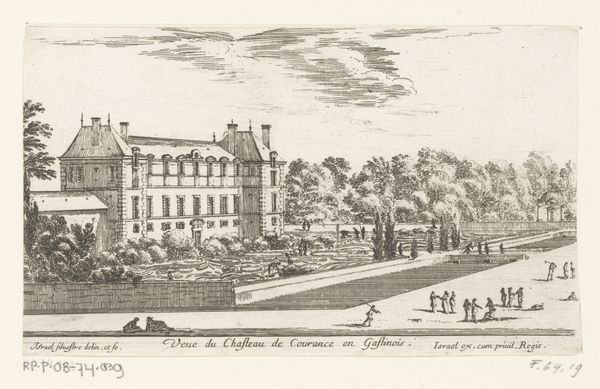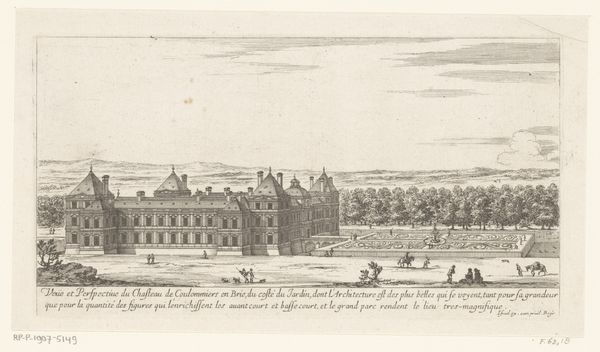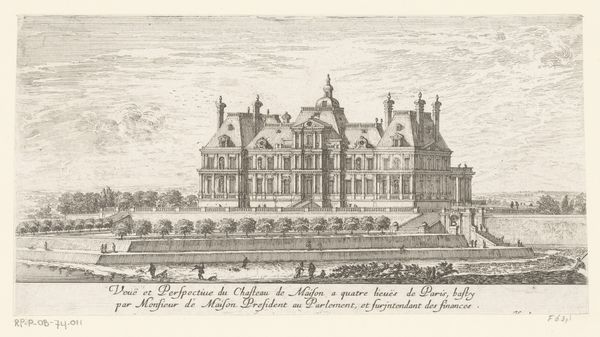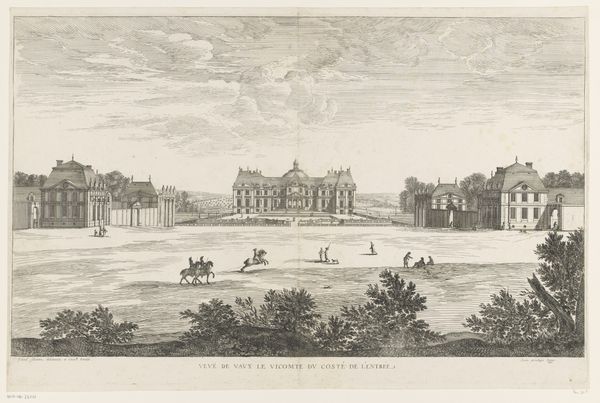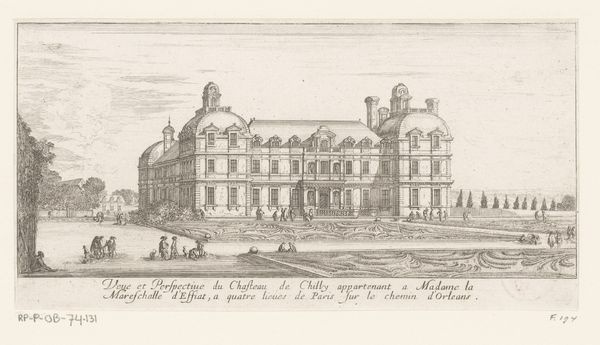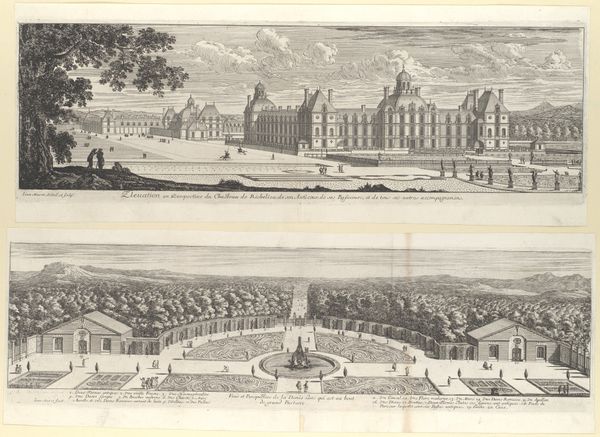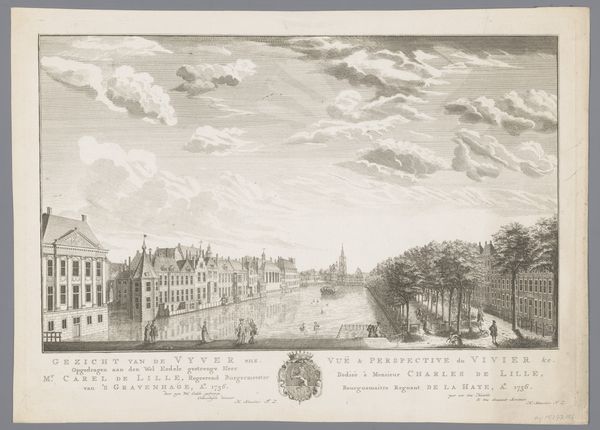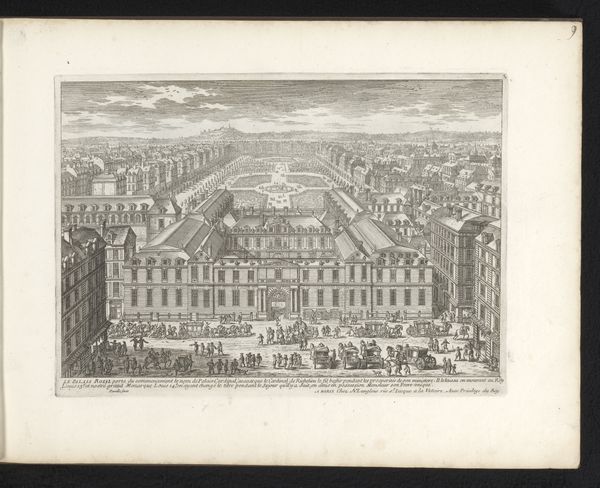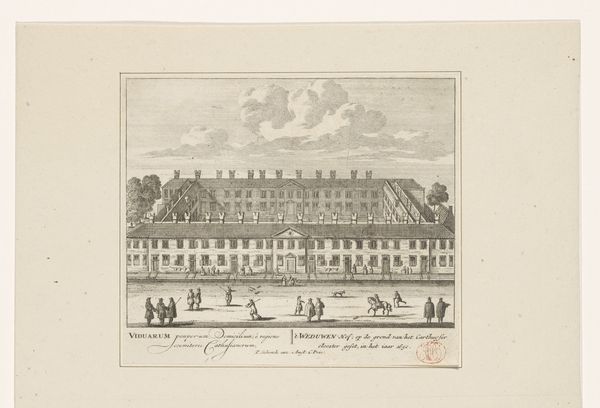
print, engraving
#
baroque
# print
#
landscape
#
cityscape
#
engraving
Dimensions: height 132 mm, width 252 mm
Copyright: Rijks Museum: Open Domain
Editor: This engraving from 1652 by Israel Silvestre, titled "View of the House of Madame de Bretonvilliers," depicts a rather grand cityscape. The house itself looms prominently, but it's the presence of the city in the background, almost dreamlike, that really captivates me. What symbolic meaning do you draw from that contrast between the home and the city? Curator: The juxtaposition is quite striking, isn't it? Here, we see not just a portrait of a residence, but a statement about belonging, status, and the individual within the collective. Notice how the house, solid and defined, asserts its presence, a symbol of personal identity and legacy against the sprawling, somewhat hazily rendered city. This deliberate contrast plays upon a timeless theme: the tension and negotiation between private and public spheres. Do you see how the architecture might signify more than just bricks and mortar? Editor: I hadn't thought about it that way, but now I do. The house, with its rigid structure, symbolizes order and control, almost standing apart from the flowing lines of the river and looser feel of the city behind. Is it supposed to feel aspirational? Curator: Precisely! Silvestre subtly uses this visual language to tell a story. Consider, too, the people populating the scene. They are small, almost secondary, yet they breathe life into the image and emphasize the scale and importance of Madame de Bretonvilliers’ house. The very act of commissioning this work implies a desire to cement her place, both literally and symbolically, within the urban landscape and the cultural memory of Paris. What might the gardens represent in this context? Editor: Maybe it’s about taming nature and shaping it to one's will? Showing command over the environment, further highlighting Madame de Bretonvilliers' position? I never realized an engraving could contain so many layers of meaning. Curator: Indeed! Silvestre masterfully employs recognizable symbols to craft a powerful narrative. He transforms what seems like a simple architectural study into a rich cultural commentary. It shows us that even landscapes can carry profound stories about status, identity, and our enduring relationship to place.
Comments
No comments
Be the first to comment and join the conversation on the ultimate creative platform.
